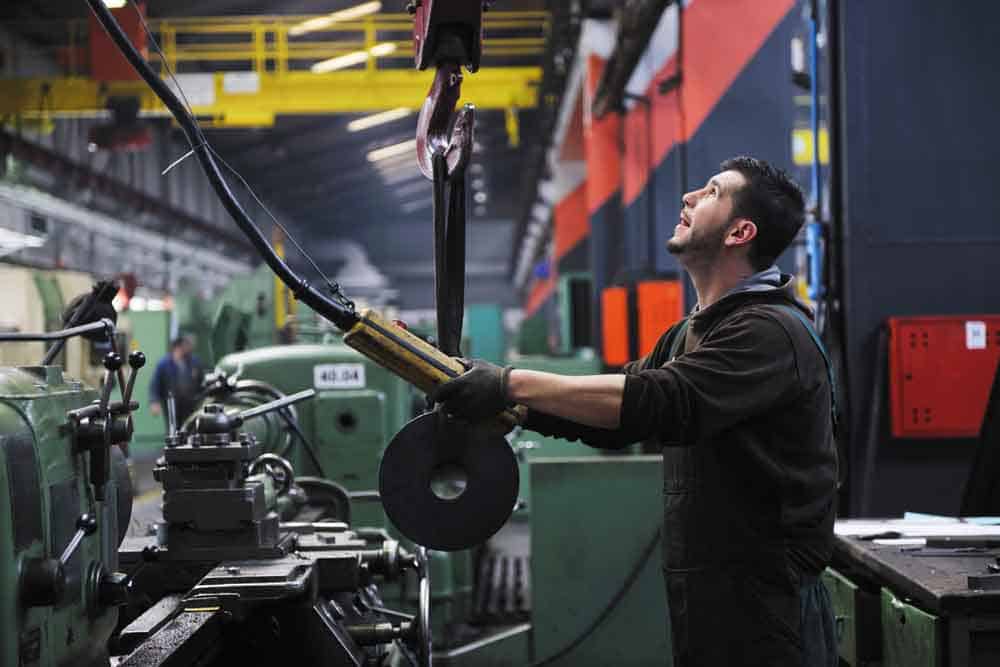
Overheating can be a strong indicator of an underlying issue impacting a bearing. As normal operating temperatures vary between applications, no single temperature is a clear sign of overheating in all situations. However, wide deviations from the accepted norm typically indicate a problem.
Possible causes of overheating usually fall into one of two categories – mechanical issues or incorrect lubrication processes. Read on for steps to take to avoid overheating.
Faulty lubrication practices
Lubrication issues are easier to rectify without professional assistance, so let’s deal with them first.
To function effectively, a bearing requires correct lubrication, which includes both product selection and application method. Lubrication supplies a thin film that forms between the raceway and the rolling elements of the bearing. This protective coating prevents metal-on-metal contact, which has the unwanted impacts of increasing friction, which in turn causes excess heat to build.
Using the wrong bearing lubricant for an application
The lubricant type chosen for bearing is always a critical consideration. If the wrong lubricant is deployed it can easily be the cause of overheating. The best practice for operators is to either consult the recommendation of their Original Equipment Manufacturer (OEM) or a professional lubricant maker or distributor to determine the ideal oil or grease for a specific application.
Over- and under-lubricating the bearing
Along with type, lubricant quantity is another factor that can cause the issue of overheating. Lubricating excessively can lead to a condition referred to as “churning”, which causes a sharp spike in temperature in almost all bearings. The only exception is incredibly slow-speed bearings.
To resolve issues of excessive lubrication, the static oil level must be reduced to the centre of the lowest roller or ball. When a grease has been selected for lubrication, the lowermost half of the bearing housing should be only filled halfway.
While over-lubrication can cause overheating, so can insufficient lubrication. A lack of lubricant can see bearing temperatures occur that are high enough to discolour and soften the steel of the bearing. If this should happen, the bearing must be immediately replaced. Mitigating this type of bearing damage is simple – ensure you only fill the housing of the bearing with oil or grease to the levels recommended above.
Blockages in the lubricant delivery system
Issues can occur in the lubricant delivery system. When lubricant return holes within the seal area of the bearing housing become blocked, the type of pumping action of some types of seals can cause oil leakage. As the oil level reduces, heat is allowed to build up. To solve this problem, systems must be proactively maintained, and blockages quickly identified and removed. The used oil then needs to be drained, and the bearing housing refilled with the correct amount of new lubricant.
Another problem leading to overheating is when the vents of external oil sight gauges get clogged. This type of blockage results in inaccurate readings, as the gauge will show a greater amount of lubricant than is really present in the delivery system. Over an extended period, the oil in the bearing drops beyond the correct level and damage happens without the operator being aware. For this reason, oil gauges must be checked and thoroughly cleaned on a regular basis.
Mechanical causes
If your lubrication practices are all correct, the cause of overheating is likely to be mechanical. Typically, these problems involve the basic mechanical components of a bearing arrangement. To find the issue behind the overheating, a qualified engineer should inspect your system focusing on internal clearances, housing shaft seals, housing fits and bearing shaft fits.
Taking a preventative maintenance approach to caring for your bearing arrangement and using best practices for lubrication will mitigate the issue of overheating and can add years to the active service life of your components.








































